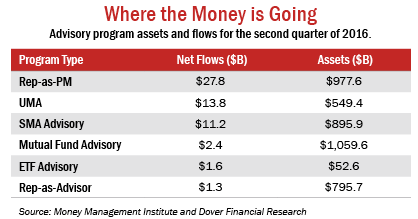With the Department of Labor’s (DOL) new Fiduciary Rule set to begin in April, there is a debate brewing over whether the more traditional asset under management (AUM) based fees or retainers will win the day moving forward. Clearly, under the best interests rule for retirement, advisers will be moving away from charging commissions and gravitate toward fees. The question is, what is the fairest and most defensible way to charge clients?
Historically, and still today, an AUM-based fee is the most popular. Clients are charged a fee based on an annual percentage of their assets under management – often declining as asset levels increase. A big selling point to this type of fee has always been that it puts the advisor on the same side of the table as the client, with everyone having an incentive to see the assets grow.
Retainers, however, are starting to become more popular, and some industry experts are beginning to champion them as being fairer to clients, and easier to defend. Retainers are often determined by a client’s net worth and income. Advocates argue that there are fewer potential conflicts of interest with retainers, and that it will become increasingly more difficult to show that a recommendation is in the client’s best interest when the advisor’s fee will depend on whether it is acted upon or not.
For example, let’s say that a client asks an advisor whether or not they should roll over their 401(k) into an IRA managed by the advisor when they get a new job, or leave it at as is. Obviously, the advisor will not earn any compensation if the funds stay at the employer, so they are put in a position where they have to demonstrate that moving it is in the client’s best interest – easier said than done! There is no such conflict under a retainer agreement, however, as the advisor is agnostic where the assets are actually managed.
On the flip side, retainers might be hard to justify for client’s with fewer assets, as they would pay much more under a typical retainer relationship than they would under an asset-based fee.
The argument is just beginning, and will continue for the foreseeable future. One thing for sure is that asset based fees are not going away, as they do qualify for the “level-fee” exemption under the fiduciary rule as long as certain fiduciary disclosures are made.
It will be important for advisors to clearly articulate to clients and prospects what their fee is, how it is calculated and why they have chosen that particular method. Some advisors might choose to offer clients a choice. Regardless, going on the offensive and being proactive in discussing fees will become more important than ever. If you don’t discuss the issue thoroughly, you will be at risk of losing clients.
